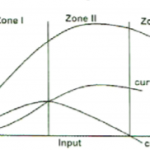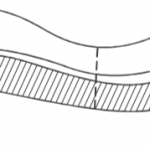KNEC KCSE Agriculture Paper 1 Question Paper / 2015 KCSE Kirinyaga West
2015 KCSE Kirinyaga West
Agriculture Paper 1
SECTION A (30 Marks)
Answer all questions in this section.
State four human factors that influence agriculture.
2 marks
Name two areas of study that make agriculture to be regarded as a science.
1 marks
State two positive effects of high temperature in crop production.
1 marks
(a). What is a seedbed? (1mk)
(b) Outline four factors that influence number of cultivation operations when preparing a seedbed
(2mks)
3 marks
State four advantages of using organic manures over inorganic fertilizers.
2 marks
Name two processing varieties of tomatoes.
1 marks
A farmer is advised to apply 40 kgs P2 05 per hectare of a crop under maize. He has access to single
Super Phosphate fertilizers containing 20% P2 05 (11/2 mks
(a) Calculate how much single super phophpate (ssp) fertilizer he should apply in two hectare (2Ha) of his Land. (Show your working) (2mks)
(b) Why is it advisable to apply phosphate fertilizers at planting time (1mk)
1 marks
(a) What is forage defoliation? (1mk)
(b) State three ways by which a farmer can make efficient use of forage crops (3mks)
4 marks
List four benefits of agroforestry tree species to a farmer.
2 marks
(a)Give two examples of fixed costs in agricultural production (1mk)
(b) List two sources of agricultural credit to a farmer (1mk
2 marks
Name two chemicals used in treatment of water.
1 marks
What is the objective of pricking out in nursery management?
1 marks
State two practices that may prevent damage of seedlings during transplanting.
1 marks
Name four post harvest practices done in the farm on cereals crops.
2 marks
Name two types of records that a poultry farmer should keep.
1 marks
State two main categories of crop pests.
1 marks
Give two maintenance practices carried out on sprinklers.
1 marks
Name two weeds that create unconducive working environment to a farmer.
1 marks
SECTION B (20 Marks)
Answer all questions in this section
The diagram below and labelled T illustrates a field pest. Study the diagram carefully and answer the
questions that follows
(a Identify the pest (1mk)
(b) State a non-chemical method used to control the pest you have identified above (1mk)
(c) Name two vegetable crops damaged by the pest above (2mks)
(d) At what stage of crops growth is the pest more damaging (1mk)
5 marks
The curve below illustrates the law of diminishing returns as used in agricultural economics. Study the curve\and answer the questions that follows:-
(a) What happens in each of the three zones I, II, and III in relation to fertilizers input to beans output
(3mks)
(b) Amongst the three zones illustrated above, which zone is the rational zone of production . Give a
reason (2mks)
5 marks
The diagram below illustrate crop diseases. Study the diagrams carefully and answer the questions that follows :-
(a) Identify the crop disease illustrated in diagrams
P: ………………………………………………………………………………………………………………. (1mk)
Q: ………………………………………………………………………………………………………………. (1mk)
(b) Give the caustitive agent for each of the above diseases illustrated above (2mks)
P: ………………………………………………………………………………………………………………. (1mk)
Q: ………………………………………………………………………………………………………………. (1mk
(c) State one cultural method used in the control of diseases illustrated by Q (1mk)
5 marks
The table below gives information for Mzee Kogi’s farm for the year ending 31-12-2014
| Transaction Dairy cattle Maize in store Buildings Potatoes for sale Fertilizers in store Wool sheep Pigs Land (100Ha) Machinery Feeds in store Office Equipment |
Kshs. cts 25,000 10,000 150,000 3,000 5,000 15,000 7,000 160,000 10,600 600 1,400 |
The farm also has Ksh. 5000/= as cash in bank , 300/= as cash at hand. It was owed 3,000/= for sale of \\ beef and 5,000/= for milk sales. The farm owed Unga Feeds Ltd 5,000/= for concentrates and KGGCU 2,500/= for farm tools acquired on credit .
(i) Draw a balance sheet for the farm for the year ending 31-12-201 (4mks)
(b) Was the business solvent or insolvent? for your answer (1mk)
5 marks
SECTION C (40 Marks)
Answer any two questions from this Section s
(a) Discuss the various factors that influence soil erosion 10mks)
(b) Describe the benefits of a land title deed to a farmer (5mks)
(c) State the precautions a farmer should undertake when collecting soil samples from a crop field
(5mks)
20 marks
(a) State and explain the various marketing functions undertaken in agriculture (10mks)
(b) Discuss the factors that are considered in drawing a farm plan (10mks)
20 marks
(i) Discuss production of sorghum under the following sub-headings (4mks)
(a) Ecological requirements (4mks)
(b) Land preparation and planting (4mks)
(c) Pest and disease control (4mks)
(ii) Discuss the factors that determine the choice of tools and implements used in tillage operations
(6mks)
20 marks






